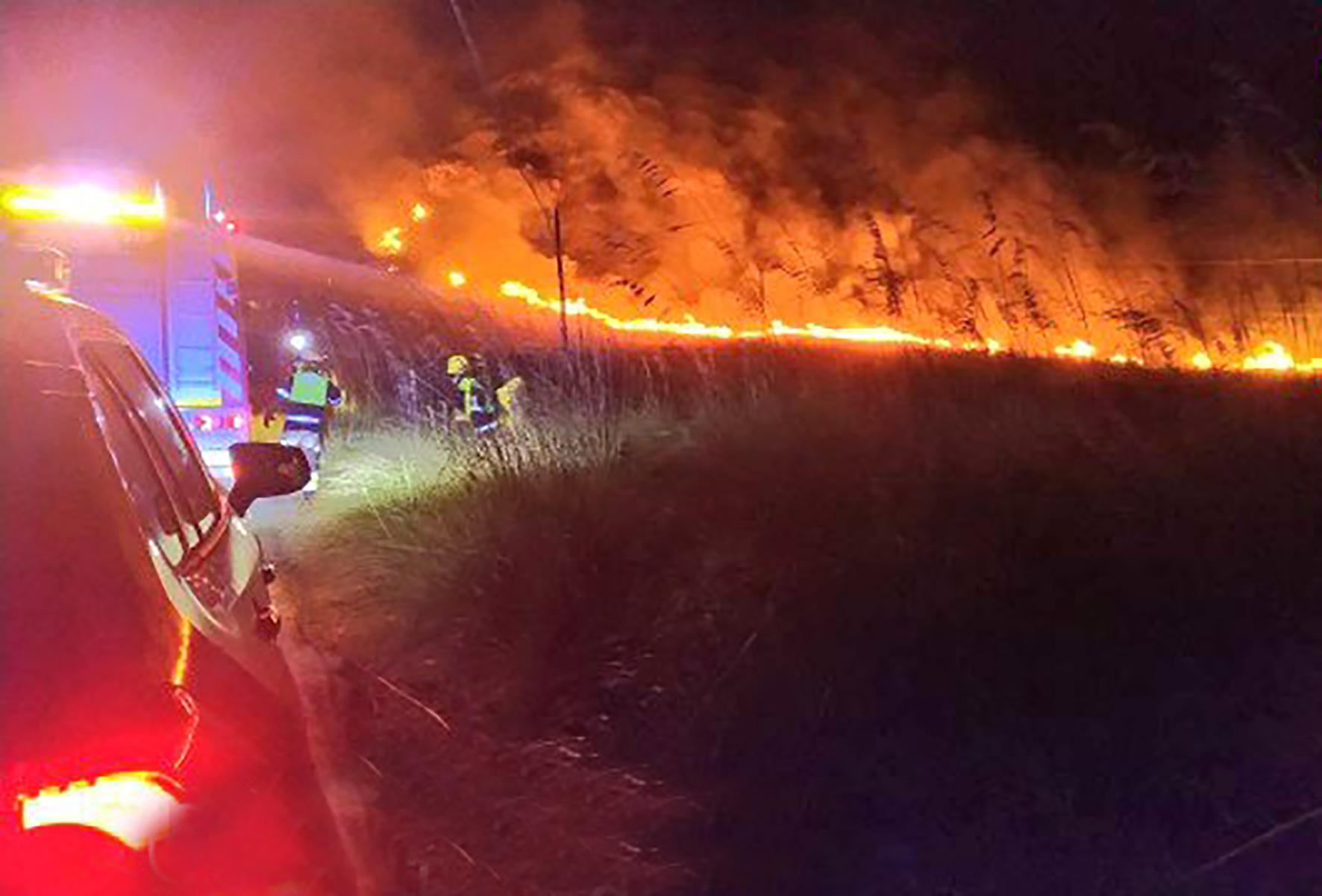The fire on the Coll de Síller last Sunday produced some startling images, such as the flames to be seen in the background and the Habitat Apartments in the foreground.
It was one that brought back bad memories of four years ago, when there was a fire in almost the identical spot. That fire, in December 2017, was more serious than last Sunday’s, so much so that I recall being up until around three in the morning updating the Bulletin website, as there were genuine fears about the advance of the fire.
These fires always look more dramatic and concerning when it is dark, as was the case last weekend and four years ago. And as it is dark, the firefighters don’t have all the available means. The Canadair, for example, can’t operate at night. The extraordinary efforts of the Majorca Fire Brigade units based in Alcudia and Inca and the Ibanat agency firefighters brought Sunday’s fire under control around 2am.
In 2017, it took longer and that was mainly because the wind was stronger than it was on Sunday. The resultant damage was four times as great - some 80 hectares as opposed to around 20.
The environment ministry (Ibanat) says that the Sunday fire was deliberate. If so, then it beggars belief. There again, it always beggars belief that anyone would intentionally start a fire. Four years ago, a medium voltage cable was ruptured. That was the cause. It was the fourth fire in the area in twenty years. There has now been the fifth.
The two fires have in common the fact that they did not occur during the period of the environment ministry’s high-risk forest fire campaign, which runs from the first of May until the middle of October.
Does the ministry have to rethink its strategy and ensure that the increased resources for the summer are available all year? Commenting at the end of this summer’s campaign, the minister, Miquel Mir, stated that climate change is meaning that the risk of fire exists for all the seasons of the year. It has obviously always been the case that there is this risk, but if we take the evidence presented this year, then do we conclude that the risk is now that much greater that resources do have to be on permanent stand-by?
The Síller fire has been the second worst this year. In February, some 50 hectares were burned on the Ariant finca in Pollensa. When offering his overview in mid-October, Mir explained that there had been 61 fires in the Balearics and total damage of 91.7 hectares.
The Ariant fire was therefore responsible for more than a half. If we go back to last year, the worst fire was the one in Albufera. That claimed 480 hectares. It was in late September, so still within the period of the campaign, but only just. In Albufera, fires are not uncommon.
Anyway, and on a lighter note, the fire’s reporting produced a couple of unusual automated translations on Facebook. Ibanat listed the resources deployed. In Catalan, these included two “autobombes” and one “cap de capatassos”.
An autobomba is a fire engine, cap de capatassos means something like a brigade leader or supervisor. The translation managed to make these two buses and one guinea pig.


No comments
To be able to write a comment, you have to be registered and logged in
Currently there are no comments.